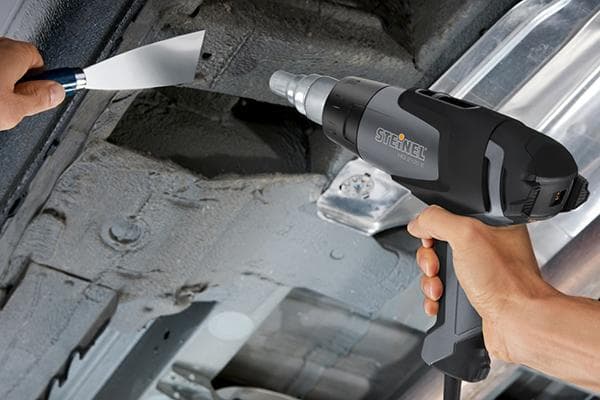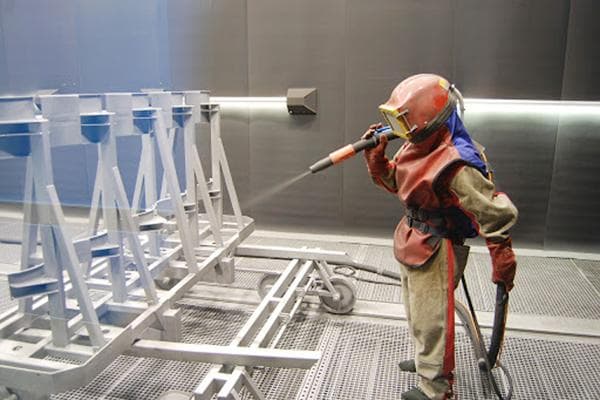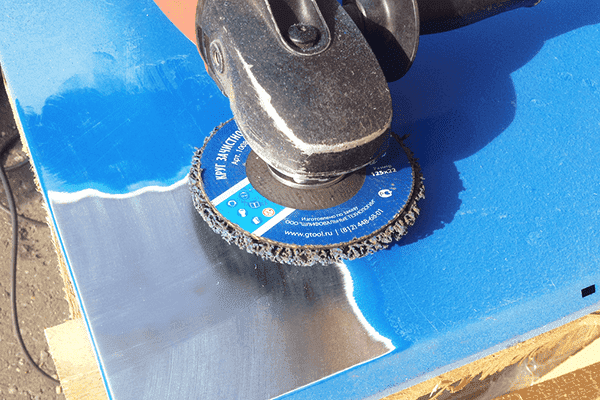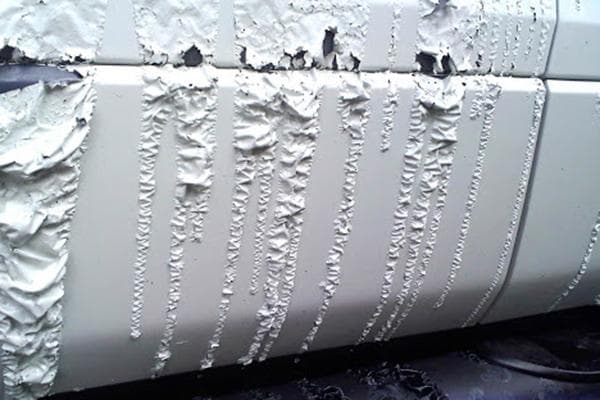How to remove old paint from a metal surface: 5 easy ways
Metal products last for decades, but over the years they lose their decorative appearance. To make something look attractive, you first need to remove the paint from the metal surface. Then remove the rust, renew the coating, and the item will be as good as new.
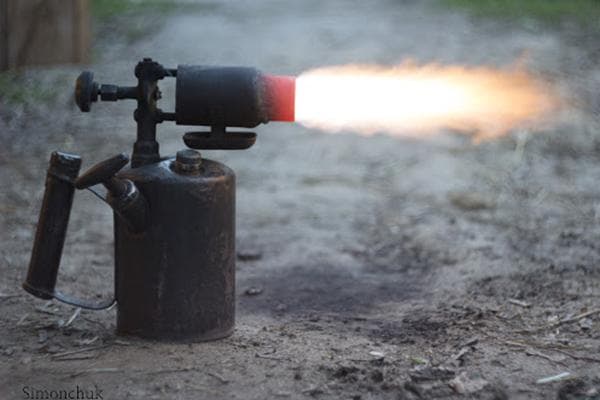
Burning
The paint can simply be burned. To do this you will need an ordinary blowtorch. Turn it on and move the flame over the painted surface. The coating will begin to bubble, char, and then burn. What is not burned needs to be scraped off with a spatula.
The main advantages of this method are low cost, speed and simplicity. This is where the advantages end. But there are many disadvantages:
- Not every surface can withstand treatment with a blowtorch. Cast iron will crack, galvanization will burn out along with the paint, and sheet iron will be damaged. Many metals heated with a blowtorch will not change in appearance, but will become brittle and sensitive to temperature fluctuations.
- After processing, deposits of the molten coating remain on the metal; they will have to be additionally sanded.
- The method is fire hazardous. And it’s not just about the blowtorch - hot metal can ignite nearby materials - boards, wallpaper, plastic.
- When paintwork is burned, toxic substances are released into the air. Work only in a respirator and only in fresh air. If the item is indoors and cannot be taken out, open the windows wide.
Heat treatment
To remove old paint, you can use an industrial hair dryer rather than a blowtorch. In addition, you will need a spatula and sandpaper.
To remove paint:
- Turn on the hair dryer and direct a stream of hot air onto the surface to be treated. The paintwork will melt and bubble up.
- Warm up a small area of the surface and turn off the hair dryer.
- Take a putty knife and quickly scrape off the paint. You need to act while it is soft and flexible.
- Take the hairdryer again and move on to the next area of the surface.
- When finished, sand the surface with sandpaper.
Don't try to process the entire product at once, it doesn't make sense. By the time you finish melting the paint, the areas you treated first will have hardened again. They will have to be warmed up a second time.
The method is long and labor-intensive. It is used in cases where there are a lot of layers of paint, and the metal needs to be completely cleaned. You cannot use an industrial hair dryer on cast iron, galvanized steel or sheet metal - this will damage the item. And be careful - you can get severe burns. An industrial hair dryer is not a hair dryer; it easily sets paper on fire with a stream of air.
Sandblasting unit
In industry, sandblasting and shot blasting machines are used for these purposes. Such a device creates a powerful water or air jet that carries abrasive particles. The “caliber” of mechanical particles depends on what product needs to be cleaned. In a matter of minutes, the installation will remove paintwork from even complex surfaces.
There is no point in buying such a device for home use. But you can contact the company and order the service - both simply and inexpensively.
Mechanical cleaning
If the surface is simple and its area is small, you can remove the paint yourself. Use any convenient tools for this:
- a brush with metal bristles;
- scrapers, spatulas;
- sandpaper;
- grinding machines;
- drill or grinder with a special attachment.
Which option to choose depends on the situation.
It is better to clean small products with complex shapes using sandpaper, carefully working out all the corners and edges. If you can’t get the paint out of the recess, you need to attach the sandpaper to a narrow flat tool - for example, wrap the frame of a toothbrush from which the bristles have been trimmed. You can use narrow boards, narrow spatulas - anything that is comfortable to hold in your hand.
A wire brush is suitable if you only need to remove loose paint. Sometimes this is enough - for example, a gate can be painted over the old coating if it adheres firmly to the metal. The brush will remove all blisters, remove rust deposits and partially level the surface. All that remains is to clean off the rust spots with sandpaper, degrease the product and you can start painting.
Various scrapers work the same way. You can't remove a strong layer of paint, but you can easily clean all problem areas.
Grinding machines are indispensable when processing large areas. In this case, the surface must be flat.
For a drill or grinder, you will have to buy an attachment - a cord brush. This is a simple, fast and effective method, but it is applicable on relatively flat surfaces. A cord brush will clean the curved surface or outer corners of the item if it is large enough. But the tool will not be able to penetrate the inner surface of corners or shallow relief.
Chemical treatment
You will need a remover - an aggressive chemical composition that eats away the paint.You can buy the remover at any hardware store. Products
Removers can be liquid, aerosol, powder or thick, with the consistency of an ointment.
To remove old paint:
- Apply the composition to the surface in a thick layer. Be sure to wear thick rubberized gloves on your hands to avoid chemical burns. Use a brush to apply liquid remover.
- Leave the composition on the product for 20-30 minutes. During this time, the paint will swell and swell. Aerosol products act much faster – in about 5 minutes.
- Scrape off the paint with a putty knife or wire brush.
- Repeat the procedure if necessary. If there are many layers of paint, you will have to apply the remover several times.
- When the surface is clean, wash it with soapy water and wipe. Do not leave the remover on the metal - it will rust.
- Be sure to treat the product with an anti-corrosion primer.
This method allows you to clean the most difficult surfaces with minimal effort. But remember: removers are very toxic. Work only in gloves and a respirator, open windows for ventilation.
If the remover doesn't work, you probably have the wrong type of paint.
Each of the listed methods for removing paint has its own advantages and disadvantages. When choosing a method, be sure to consider the size, shape of the product, type of metal and type of paint. And don’t forget about safety - use gloves, safety glasses and a respirator.
